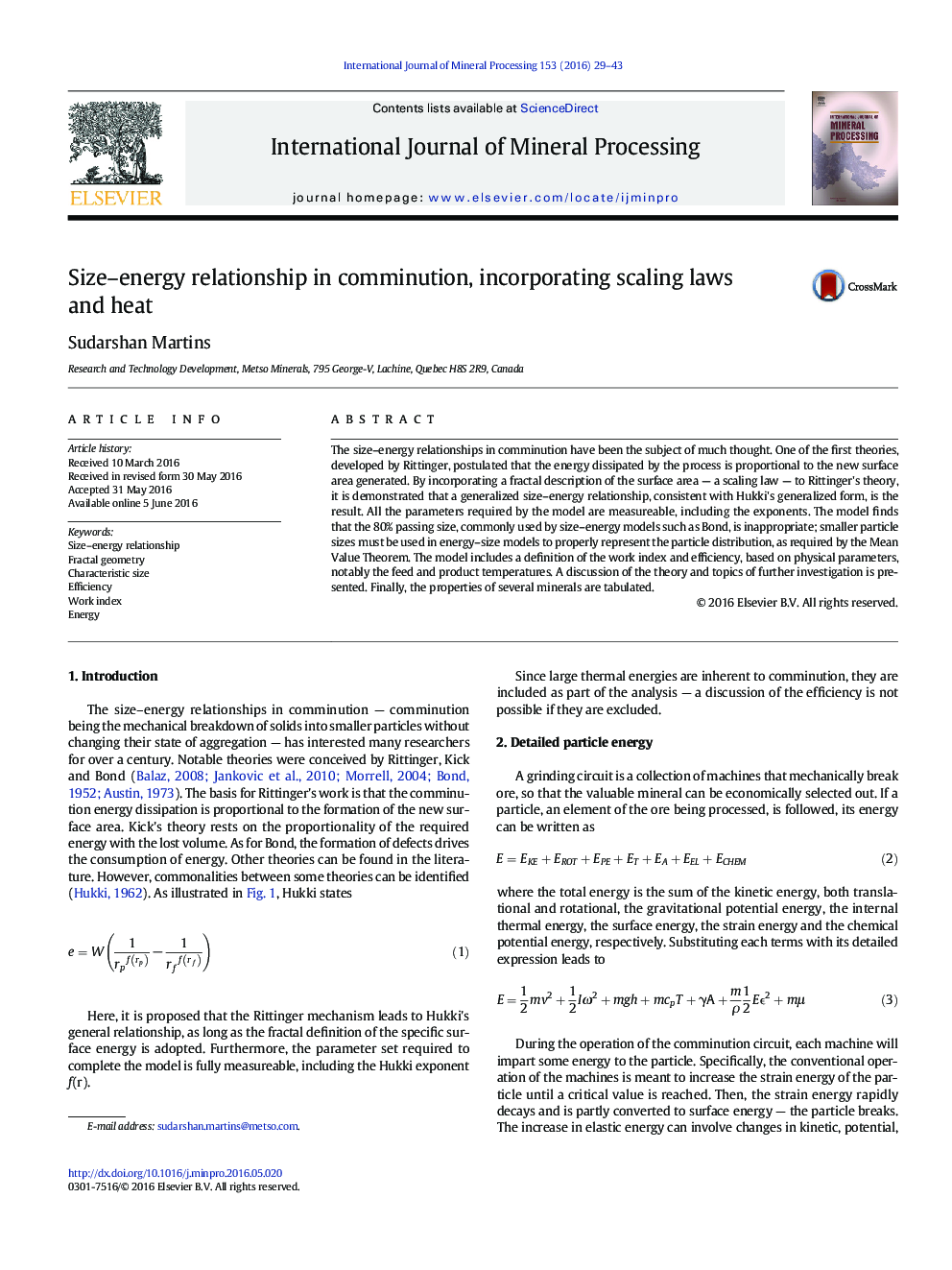| کد مقاله | کد نشریه | سال انتشار | مقاله انگلیسی | نسخه تمام متن |
|---|---|---|---|---|
| 213690 | 1425780 | 2016 | 15 صفحه PDF | دانلود رایگان |
• Adapting fractal geometry to Rittinger's breakage law, a reformulation of Hukki's breakage law is obtained.
• All model parameters are measurable and have physical meaning.
• From the model, expressions for the Bond work indices are obtained.
• The density, heat capacity and the specific surface energy for a numbers of minerals are tabulated.
The size–energy relationships in comminution have been the subject of much thought. One of the first theories, developed by Rittinger, postulated that the energy dissipated by the process is proportional to the new surface area generated. By incorporating a fractal description of the surface area — a scaling law — to Rittinger's theory, it is demonstrated that a generalized size–energy relationship, consistent with Hukki's generalized form, is the result. All the parameters required by the model are measureable, including the exponents. The model finds that the 80% passing size, commonly used by size–energy models such as Bond, is inappropriate; smaller particle sizes must be used in energy–size models to properly represent the particle distribution, as required by the Mean Value Theorem. The model includes a definition of the work index and efficiency, based on physical parameters, notably the feed and product temperatures. A discussion of the theory and topics of further investigation is presented. Finally, the properties of several minerals are tabulated.
Journal: International Journal of Mineral Processing - Volume 153, 10 August 2016, Pages 29–43
